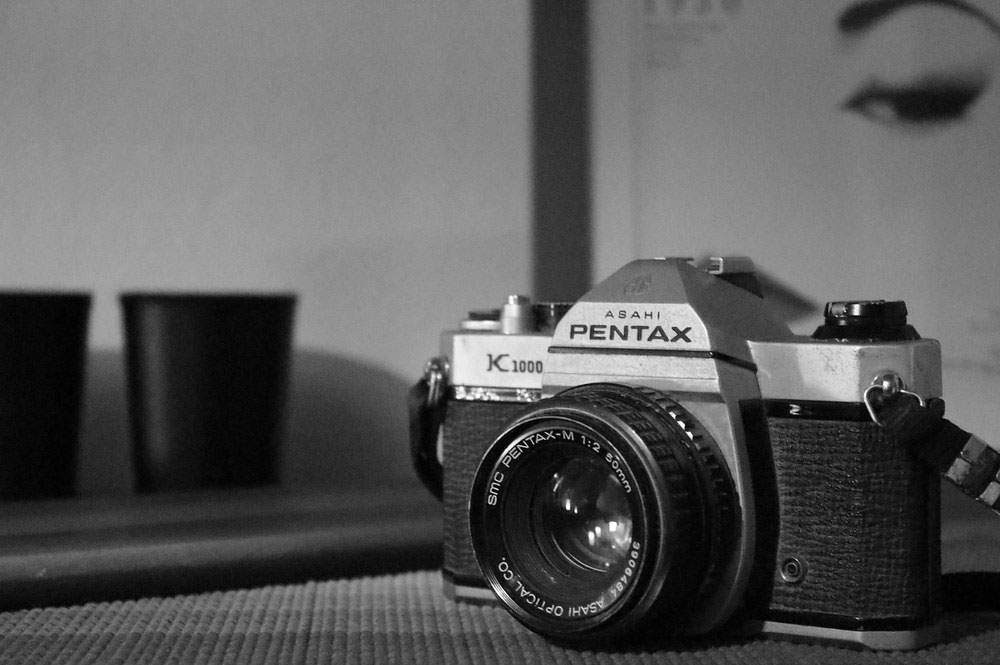Quick Guide to Black and White Photography Part 3 – Using the Camera
How to Use the Film Camera

Photo by Al Tassano. Licensed under CC BY 2.0
Once your film is loaded you’ll be ready to begin shooting black and white photography; but first let’s review some essential bit of information regarding your film camera. There are two key components you need to understand before you can begin exposing film: the shutter speed and the aperture. The shutter speed and aperture, along with the film speed, determine your exposure length – or how much light enters through the lens to hit the film. While this guide may be specific to film-based black and white photography, the following information also applies to color photography as well as digital photography.
Shutter Speed
The major advantage of an SLR camera is that what you see through the viewfinder is also what the lens “sees.” This is unlike other cameras where the viewfinder and the lens are slightly off each other. In all SLR cameras there is a system of mirrors that reflect light entering the lens to the viewfinder so that you are able to view through the lens. Immediately behind the lens is a shutter that opens and closes when you press the shutter release button. When the shutter opens your viewfinder view becomes blocked by the shutter and turns black. When the shutter opens it exposes the film to light and then seals off the light when it closes again. How long the shutter stays open is determined by the shutter speed of the camera. The shutter speed is set by a dial typically found on the top right of the camera. The dial will contain numbers that typically read 1-2-4-8-15-30-60-125-250-500-1000 and more. Note that these numbers do not represent full seconds but rather fractions of a second. 1 is 1/1, or 1 second, and 2 is 1/2, or a half second, and so forth. Many cameras also contain a bulb setting (labeled “B”) that allows you to keep the shutter open for as long as you hold the shutter release button. This setting is helpful for long exposures that may be required during low light situations or night photography.
Understanding the shutter speed is paramount to understanding motion in black and white photography. A fast shutter speed can freeze motion while a slow shutter speed will show a motion blur as the subject moves. As a general rule of thumb any shutter speed slower than 60 should be taken with a tripod as any slight shakes of your hand may appear.
Visit shutter speed or motion photography for more info.
The Aperture
The aperture is inside the lens of the camera. It opens and closes to allow more or less light through the lens. The degree of the aperture opening is represented by f-stops, numbers marking the ratio of focal length of the lens to the diameter of the opening. The range of f-stops varies from lens to lens, but will typically read f/1.4, f/2, f/2.8, f/4, f/5.6, f/8, f/11, f/16, f/22, f/32, and more. The smaller the aperture number the larger the opening of the lens is, meaning more light can enter. Conversely, as the aperture number becomes larger the opening becomes smaller. The aperture is changed by rotating a ring on the lens marked by the aperture numbers, typically the ring closest to the camera body.
Note that not all lenses are created equal. Some will have a wider range of f-stops than others while others may range from f/2.8 – f/32 and others from f/1.4 to f/22.
Understanding the aperture is key to what is called depth of field in black and white film photography. Depth of field, in short, is the distance between the nearest and farthest objects in a scene that appear sharp in the final image. The larger the aperture opening the shallower the sharpness becomes (shallow depth of field) and the smaller the aperture opening the sharper the image becomes (great depth of field).
Visit aperture or depth of field for more info.
Now that you have a basic understanding of the two key camera functions you can apply it to black and white film photography. Continue to exposing black and white film to learn how the shutter speed and aperture work together, along with the film speed, to expose the film.
















